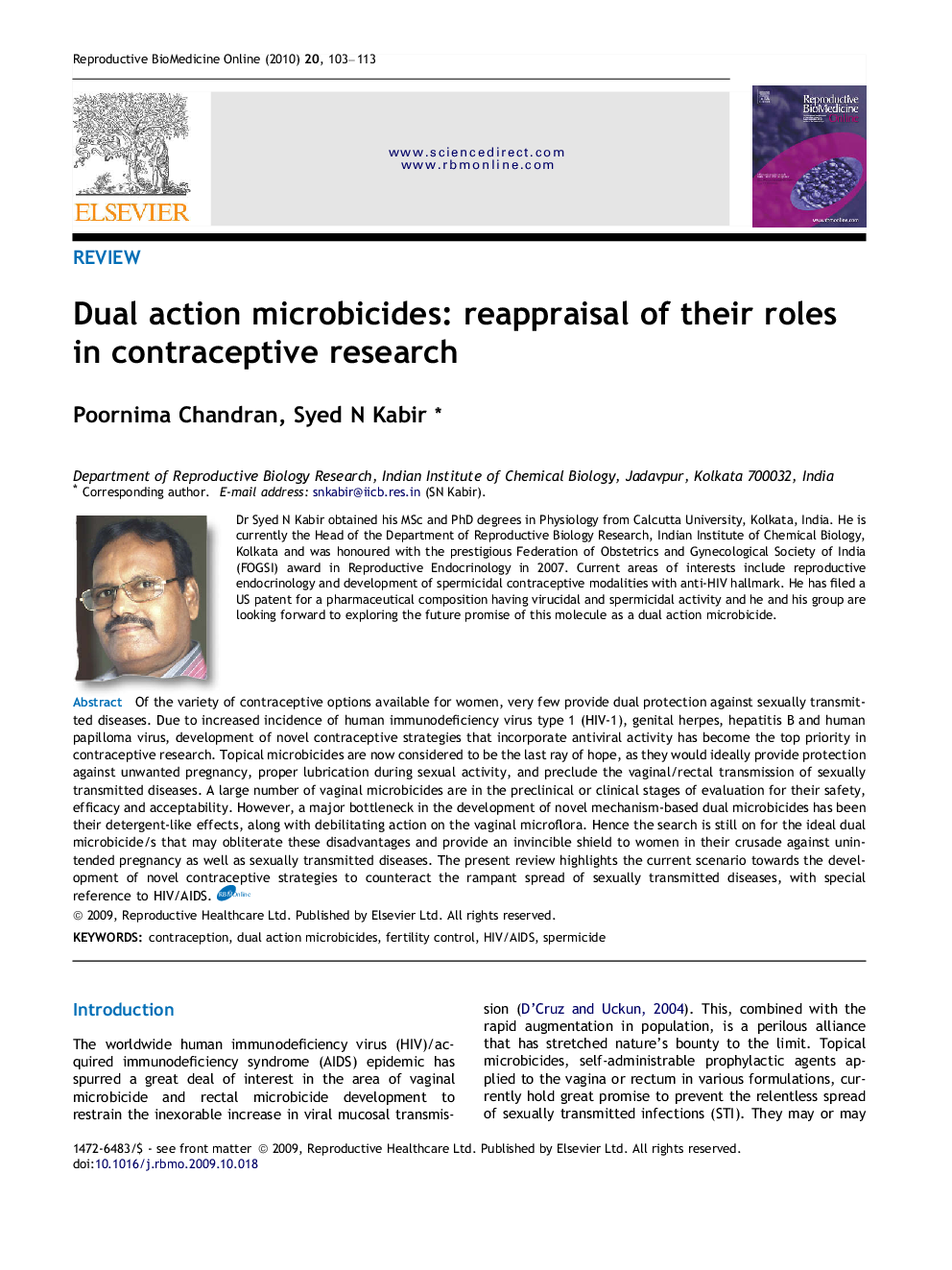| Article ID | Journal | Published Year | Pages | File Type |
|---|---|---|---|---|
| 3971916 | Reproductive BioMedicine Online | 2010 | 11 Pages |
Of the variety of contraceptive options available for women, very few provide dual protection against sexually transmitted diseases. Due to increased incidence of human immunodeficiency virus type 1 (HIV-1), genital herpes, hepatitis B and human papilloma virus, development of novel contraceptive strategies that incorporate antiviral activity has become the top priority in contraceptive research. Topical microbicides are now considered to be the last ray of hope, as they would ideally provide protection against unwanted pregnancy, proper lubrication during sexual activity, and preclude the vaginal/rectal transmission of sexually transmitted diseases. A large number of vaginal microbicides are in the preclinical or clinical stages of evaluation for their safety, efficacy and acceptability. However, a major bottleneck in the development of novel mechanism-based dual microbicides has been their detergent-like effects, along with debilitating action on the vaginal microflora. Hence the search is still on for the ideal dual microbicide/s that may obliterate these disadvantages and provide an invincible shield to women in their crusade against unintended pregnancy as well as sexually transmitted diseases. The present review highlights the current scenario towards the development of novel contraceptive strategies to counteract the rampant spread of sexually transmitted diseases, with special reference to HIV/AIDS.
